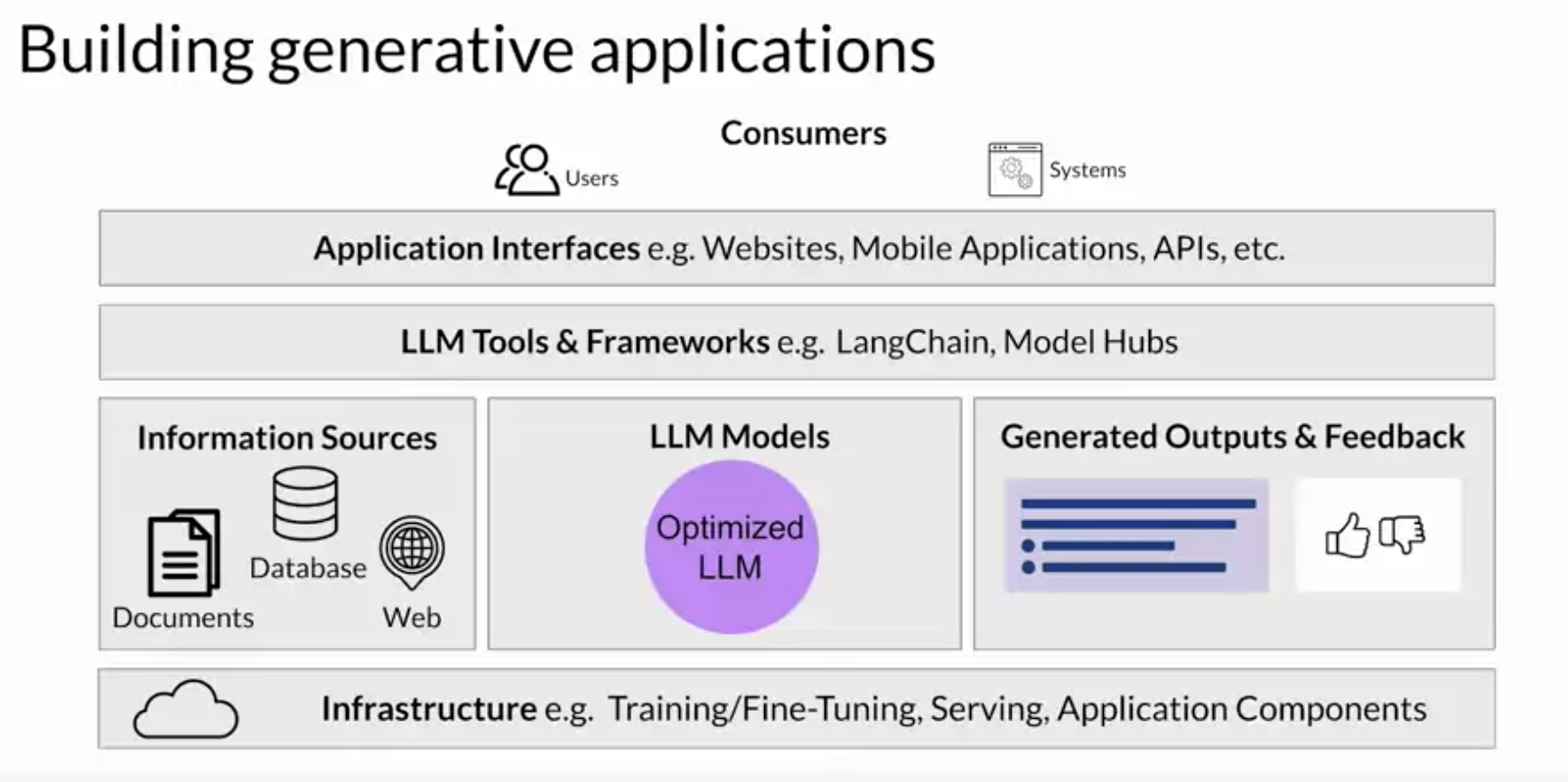Hello Readers, Today i will a write blog on building end-to-end GenAI application with LLM.
Understanding the Building Blocks
To build robust LLM-powered applications, you need to consider several key components:

img source: Coursera
1. Infrastructure Layer
The foundation of any LLM-powered application lies in its infrastructure layer. This layer provides the necessary compute, storage, and network resources to serve up LLMs and host application components. You can choose to leverage on-premises infrastructure or opt for on-demand cloud services, offering scalability and flexibility.
2. Large Language Models
Central to your application are the LLMs themselves. These models, including foundation models and task-specific adaptations, are deployed on the chosen infrastructure to fulfill inference requirements. Depending on the application’s needs, you may prioritize real-time or near-real-time interactions with the model.
3. Data Retrieval and Integration
In many cases, applications require access to external data sources. This could involve retrieving information discussed in the retrieval augmented generation section. Integrating such data seamlessly into your application enhances its capabilities and enriches user experiences.
4. Output Management and Feedback Mechanisms
Efficient management of model outputs is crucial for enhancing application performance. Implementing mechanisms to capture, store, and analyze user completions can augment the effectiveness of LLMs over time. Additionally, gathering user feedback facilitates continuous refinement and improvement of the application.
5. Tools and Frameworks
Various tools and frameworks are available to simplify the implementation of LLM techniques discussed in this lesson. For instance, len chains built-in libraries facilitate the integration of advanced techniques like power react or chain of thought prompting. Model hubs offer centralized management and sharing of models, streamlining the development process.
6. User Interface and Security
The final layer of your application encompasses the user interface and security components. Whether it’s a website or a REST API, this layer serves as the interface through which users interact with the application. Implementing robust security measures is essential to safeguard user data and ensure secure interactions.
Conclusion
In conclusion, building end-to-end generative AI applications with LLMs requires careful consideration of various components across the architecture stack. By integrating infrastructure, models, data, tools, and security measures effectively, developers can create powerful and intuitive applications. As we’ve seen throughout this lesson, LLMs hold immense potential as reasoning engines, driving innovation across diverse domains. With frameworks like len chain, developers can expedite the development, deployment, and testing of LLM-powered applications, ushering in an exciting era of AI-driven innovation.
